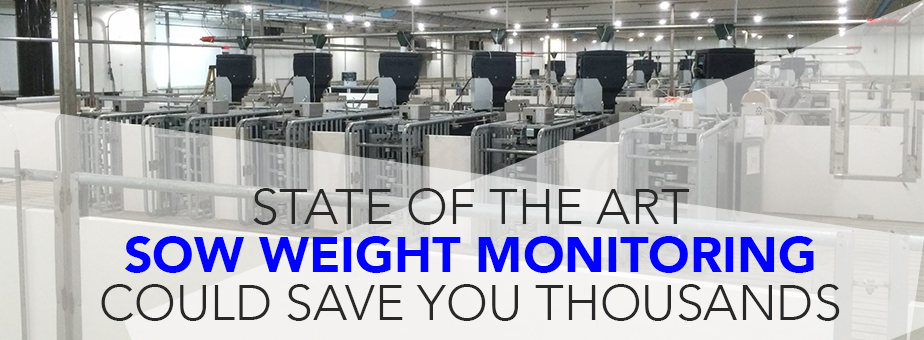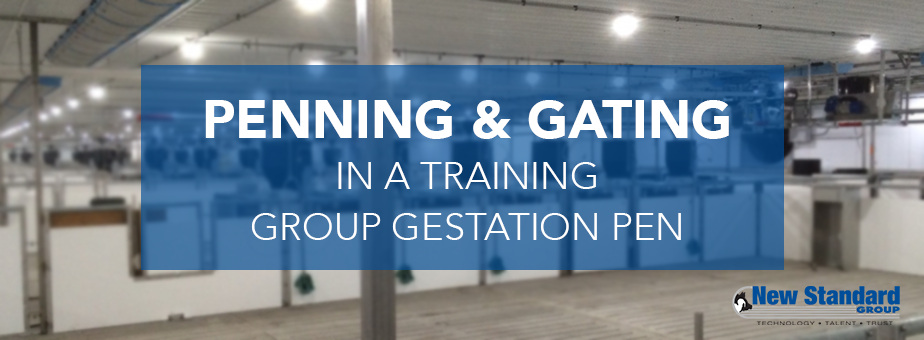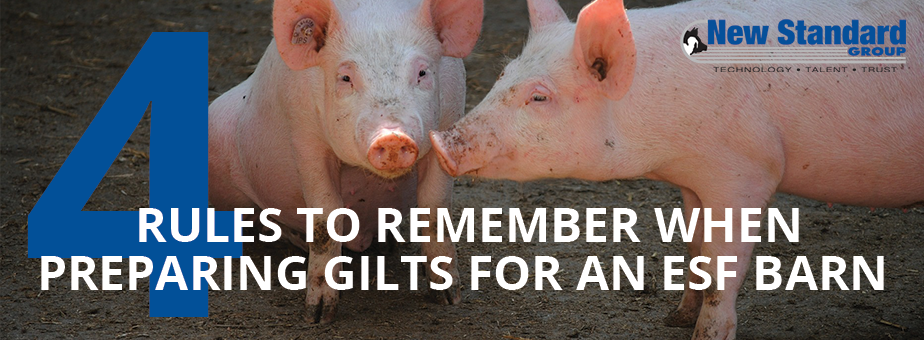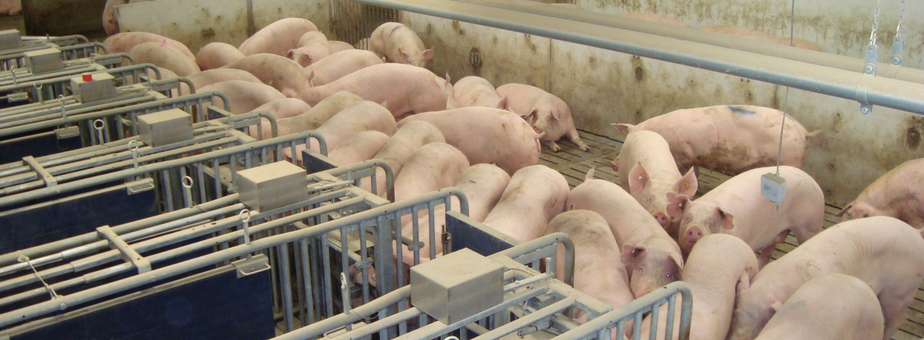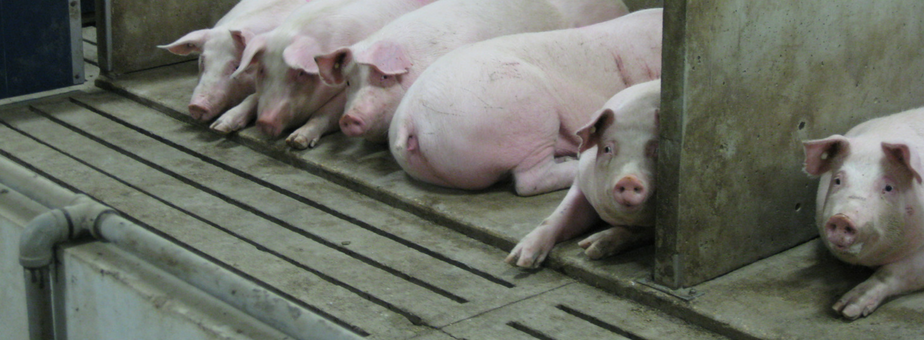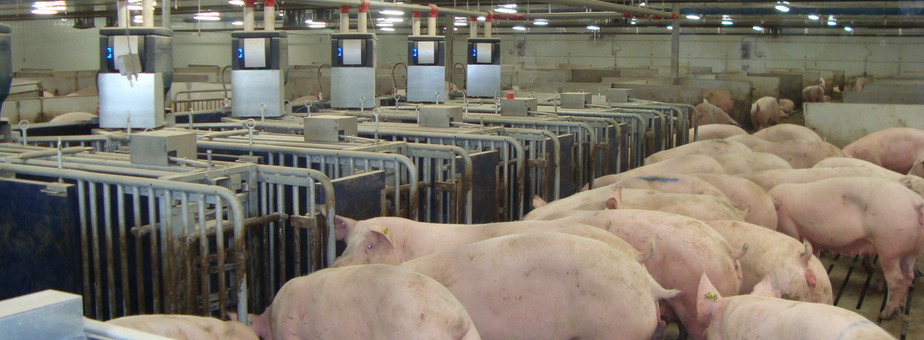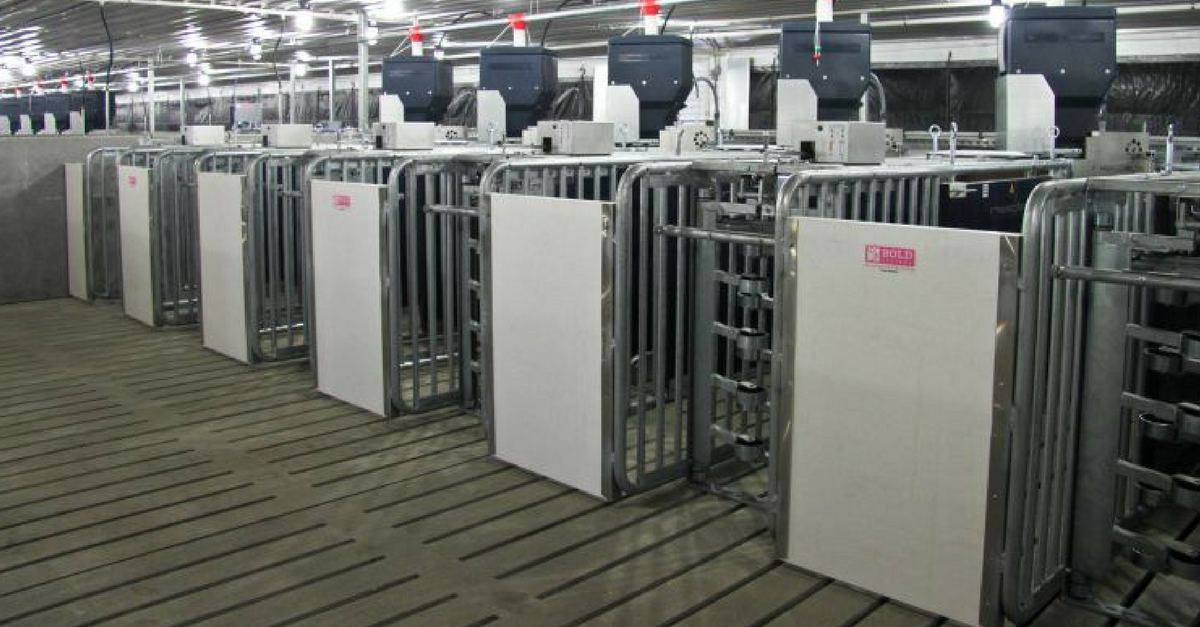Even in the best-managed barns, one out of three sows is either over or under her ideal farrowing weight which of course affects her litter size and viability. These less productive sows cost the industry almost $30,000 for a group of 1,000 sows. The task before every pork producer is how to get their farrowing rates up and their costs down. The best way to do this is by incorporating state of the art sow weight monitoring into your electronic sow feeding systems.
How you design your hog penning and gating in a gilt developer unit (GDU) and the ESF training pen is key to making your gilts comfortable with the new environment of a group sow housing facility. As your gilts develop, we have to incorporate ways to naturally acclimate them and make them comfortable with what they will see and interact with in the ESF pens. Training the gilts to be comfortable with human interaction is essential when they are young, but as the girls mature, we should start introducing them to the equipment and processes they will see later on in a group gestation pen. This will make the transition to group sow housing much smoother for both the pigs and your barn staff.
The success of your ESF barn, upon startup and during regular operation, depends on a few key factors. One of the most important of these is how you train the gilts that are coming into the system, and more specifically, how you prepare the gilts overall. In this article, we will walk you through the process of preparing, training and acclimating gilts, from weaning through training and further on into breeding. Depending on the flow of animals into your loose sow housing facility, you can incorporate the following four rules at any point in the life of the gilt.
As it enters its 10th year of operation, we would like to highlight the building that set the group sow housing industry standard, the Eagle Creek Colony electronic sow feeding facility. The Eagle Creek barn is a 1,000 sow farrow to finish site located near Altamont, MB. It was designed using large-pen gestation and Nedap equipment and the year-to-year annual weaning in the facility is nearly 32 pigs/sow/year, which is above most conventional systems. It is a fully dynamic building with central separation. New Standard started designing the building in January 2007, and later began construction in April. The first animals were introduced to the barn in April 2008. The finisher barn was later completed in 2010.
When designing a hog barn or restructuring an existing barn, the animal welfare and comfort should always be top priority and at the front of your mind. At New Standard, the pig comes first when we design our loose housing barns. We believe that the needs of the animals and barn staff are priority number one, yet we also believe that any decision needs to make financial sense. This is why we strive to create efficient, economical and balanced plans tailored to each customer. When you have happy and comfortable pigs and the barn personnel are able to work efficiently, your production will increase and your barn management will become less stressful.
How you design for and manage your Electronic Sow Feeding systems in your barn is key to a high functioning sow unit. When a feed station is incorporated poorly into a pen, it is certain to cause a myriad of problems, increasing sow stress and reducing your production. When designing feed stations into a barn, we take the time to understand your managerial approach along with your employees' and animals' needs to make your barn highly effective and negate sow stress and digestive issues. As important as the ESF configuration and design is, how you manage your barn is even more crucial. Here is some insight on how we suggest you manage feed cycles once your group housing facility is up and running.
Electronic Sow Feeding (ESF) is a shift in how we manage sows in group housing and the North American market is rapidly moving towards housing sows in large open pens. Group sow housing with electronic sow feeding is designed to create stress free and efficient husbandry. With ESF systems you will save on feed, improve animal welfare, and increase hog production. Switching your barn to ESF systems or building these systems into your new barn can help you manage your hog facilities more easily.




